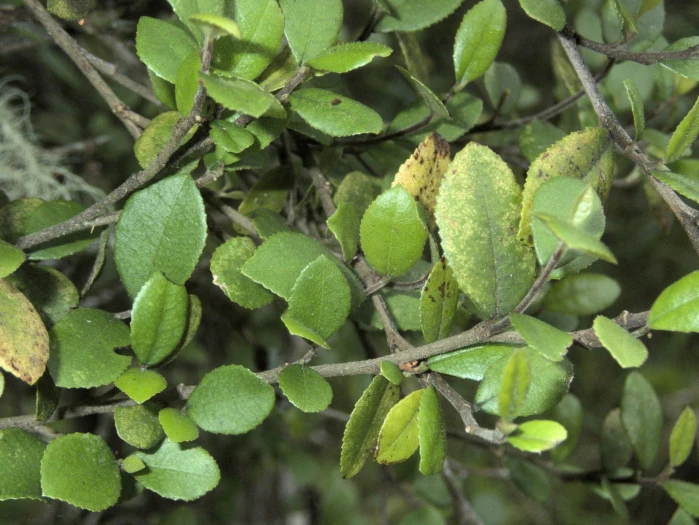Small-Leaved Milk Tree
(Paratrophis microphylla)
Small-Leaved Milk Tree (Paratrophis microphylla)
/
/

Paul Bell-Butler
CC BY 4.0
Image By:
Paul Bell-Butler
Recorded By:
Copyright:
CC BY 4.0
Copyright Notice:
Photo by: Paul Bell-Butler | License Type: CC BY 4.0 | License URL: http://creativecommons.org/licenses/by/4.0/ | Rights Holder: Paul Bell-Butler | Publisher: iNaturalist | Date Created: 2020-11-08T11:23:53-08:00 |




















































Estimated Native Range
Climate Requirements for Jamestown, New York
| This Plant | Your Site | Plant Suitability for Your Location | ||
|---|---|---|---|---|
| • Precipitation | 22" - 177" | 45" | Aquatic | Aquatic |
| • High Temp. | 61°F - 78°F | 81°F | Your summers may be too hot for this plant. | Too hot |
| • Low Temp. | 26°F - 50°F | 15°F | Your winter temperatures may be too cold for this plant | Too cold |
This plant should grow well at your location with about N inches per year (Y minutes per month) of irrigation.
Summary
Paratrophis microphylla, commonly known as Small-Leaved Milk Tree, is an evergreen tree or large shrub native to New Zealand, where it thrives in coastal and lowland forests. It typically grows to a height of 6-24 feet (1.8-7.3 meters) and a width of 3-6 feet (0.9-1.8 meters). The Small-Leaved Milk Tree has a dense, bushy habit with small, dark green, glossy leaves and inconspicuous greenish flowers that may be followed by small, purple-black berries if pollination occurs.
This species is valued for its lush, evergreen foliage, which provides year-round interest and makes it suitable for use as a screening plant or hedge in gardens. It is also utilized for revegetation projects in its native range due to its resilience and adaptability. In cultivation, it prefers full sun to part shade and requires medium amounts of water, thriving in soils with slow to medium drainage. While it is not particularly demanding, it benefits from shelter in colder climates and mulching to maintain soil moisture. It is relatively free from major pests and diseases, but root rot can be a concern in poorly drained soils.CC BY-SA 4.0
This species is valued for its lush, evergreen foliage, which provides year-round interest and makes it suitable for use as a screening plant or hedge in gardens. It is also utilized for revegetation projects in its native range due to its resilience and adaptability. In cultivation, it prefers full sun to part shade and requires medium amounts of water, thriving in soils with slow to medium drainage. While it is not particularly demanding, it benefits from shelter in colder climates and mulching to maintain soil moisture. It is relatively free from major pests and diseases, but root rot can be a concern in poorly drained soils.CC BY-SA 4.0
Plant Description
- Plant Type: Shrub, Tree
- Height: 6-24 feet
- Width: 3-6 feet
- Growth Rate: Moderate
- Flower Color: N/A
- Flowering Season: Spring, Summer, Fall
- Leaf Retention: Evergreen
Growth Requirements
- Sun: Full Sun, Part Shade
- Water: Medium
- Drainage: Slow, Medium
Common Uses
Bird Garden, Butterfly Garden, Low Maintenance, Potted Plant
Natural Habitat
native to New Zealand, where it thrives in coastal and lowland forests
Other Names
Common Names: Turepo
Scientific Names: Streblus heterophyllus, Paratrophis microphylla, Epicarpurus microphyllus, Paratrophis heterophylla, Taxotrophis microphylla
GBIF Accepted Name: Paratrophis microphylla (Raoul) Druce